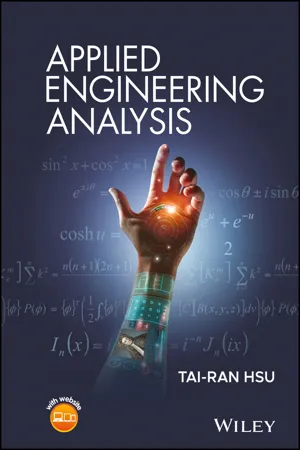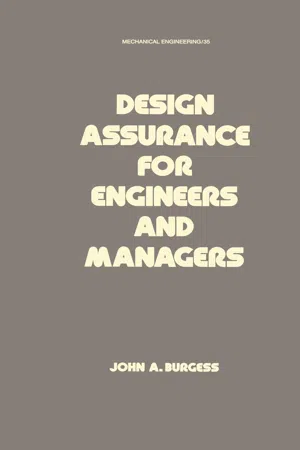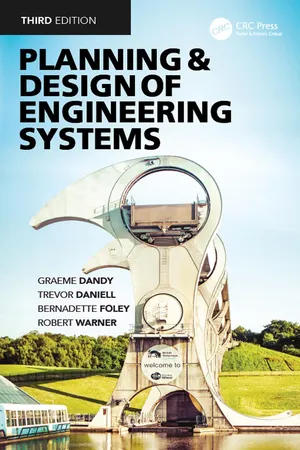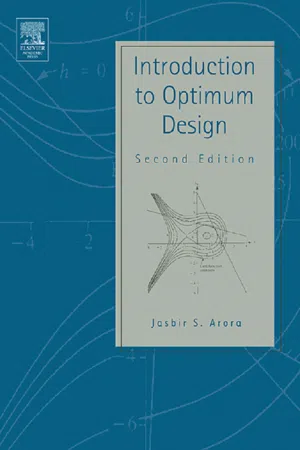Technology & Engineering
Engineering Analysis
Engineering analysis is the process of using mathematical and scientific principles to solve engineering problems. It involves breaking down complex systems into smaller, more manageable components and analyzing them to determine their behavior and performance. The goal of engineering analysis is to design and optimize systems that meet specific requirements and constraints.
Written by Perlego with AI-assistance
Related key terms
1 of 5
4 Key excerpts on "Engineering Analysis"
- eBook - ePub
- Tai-Ran Hsu(Author)
- 2018(Publication Date)
- Wiley(Publisher)
Chapter 1 Overview of Engineering AnalysisChapter Learning Objectives
- Learn the concept and principles of Engineering Analysis, and the vital roles that Engineering Analysis plays in professional engineering practices.
- Learn the need for the application of Engineering Analysis in three principal functions of professional engineering practice: creation, problem solving, and decision making.
- Learn that engineers are expected to solve problems that relate to protection of properties and public safety and also to make decisions.
- Appreciate the roles that mathematics plays in Engineering Analysis, and acquire the ability to use mathematical modeling in problem solving and decision making in dealing with real physical situations.
1.1 Introduction
Engineering Analysis involves the application of scientific principles and approaches that often use mathematical modeling as a tool to reveal the physical state of an engineering system, a machine or device, or structure under study. Applications of Engineering Analysis also include electrical circuit design, derivation of algorithms for computer programming, and so on. It is an integral part of the professional practice of all engineering disciplines. - eBook - ePub
- John A. Burgess(Author)
- 2020(Publication Date)
- CRC Press(Publisher)
6 Design Methods and Analysis6.1 Introduction 6.2 Design Methods 6.2.1 Engineering Procedures 6.2.2 Standard Design Methods 6.3 Design Analysis 6.3.1 Design Calculations 6.3.2 Calculation Records 6.3.3 Calculation Verification 6.3.4 Technical Reports 6.4 Design Integration 6.5 Summary 6.1 INTRODUCTIONThe design process is a combination of art and science, Developing a product which serves a useful function and packaging it in a manner which is both efficient and pleasing is an artform in itself. Yet scientific methods are required to assure the product makes effective use of materials, space, interactions among parts, and accomplishes this at a cost attractive to potential buyers. This aspect of design routinely requires mathematical analysis to determine the size and shape of parts to carry the required loads, operate for the prescribed life, withstand the environmental conditions, etc., in the course of fulfilling its intended functions. Some of the mathematical analysis may be simple, others may be very complex. Yet the principles for assuring the quality of design over the full range of extremes is essentially the same. Certain information should be defined, applied, recorded and verified for all types of calculations. This chapter discusses these basic elements and presents recommended practices for implementation.In addition to the mathematical aspects of design, there is another area where the orderly, logical approach of science can contribute to the design assurance process. That is in the development and use of engineering procedures and standard practices. These are tools for defining the preferred way for accomplishing the tasks assigned to the engineering organization. In a one-man engineering department the methods may be informal and simply committed to memory. But even still, the best methods based on the one engineer's personal knowledge and experience will be used over and over again—within the constraints of memory and the pressures imposed by time and cost. Overall, each engineer typically wants to do the job right and tends to stick to proven methods. - eBook - PDF
- Graeme Dandy, Trevor Daniell, Bernadette Foley, Robert Warner(Authors)
- 2017(Publication Date)
- CRC Press(Publisher)
The purpose of the model is to mimic the behaviour of the real system to an acceptable level of accuracy. The model is the starting point for analysis, which is the term that describes the activity of using the model in order to predict how the real engineering system and its components will behave when subjected to a specific set of operating conditions and environmental conditions. In current engineering work, a model is most often in the form of a set of mathematical equations or computer algorithms, which we call a mathematical model. The analysis is then theoretical, and involves computations that are often complex, and usually undertaken by computer. Before powerful computing facilities became available, much greater reliance had to be placed by engineers on physical models, which will be discussed shortly. Use of mathematical models in theoretical analysis The improvements in computing hardware and software that have occurred in recent decades have allowed mathematical modelling and analysis to be undertaken for a wide range of engineering problems. The processes of mathematical modelling and analysis of a physical system are indicated in the schematic in Figure 2.11, which shows the steps used to predict how an existing system or a proposed new system will respond to a specific set of operating conditions and inputs. There are three processes in Figure 2.11 and they are represented by the arrowed lines denoted as A, B, and C. 42 Planning and Design of Engineering Systems Process A represents the creation of a conceptual model that consists of a set of equations or algorithms. This is a simplified representation of the real system, but it shows how the real system will behave under a variety of different conditions and inputs. Process B is the theoretical analysis of the system model for a specific set of operating conditions and inputs. - eBook - ePub
- Jasbir Singh Arora(Author)
- 2004(Publication Date)
- Academic Press(Publisher)
Chapter 13 .1.2 Engineering Design versus Engineering Analysis
Can I design without analysis?It is important to recognize differences between Engineering Analysis and design activities . The analysis problem is concerned with determining the behavior of an existing system or a trial system being designed for a given task. Determination of the behavior of the system implies calculation of its response under specified inputs. Therefore, the sizes of various parts and their configurations are given for the analysis problem, i.e., the design of the system is known. On the other hand, the design process calculates the sizes and shapes of various parts of the system to meet performance requirements. The design of a system is a trial and error procedure. We estimate a design and analyze it to see if it performs according to given specifications. If it does, we have an acceptable (feasible) design , although we may still want to change it to improve its performance. If the trial design does not work, we need to change it to come up with an acceptable system. In both cases, we must be able to analyze designs to make further decisions. Thus, analysis capability must be available in the design process.This book is intended for use in all branches of engineering. It is assumed throughout that students understand analysis methods covered in undergraduate engineering statics and physics courses. However, we will not let the lack of analysis capability hinder the understanding of the systematic process of optimum design . Equations for analysis of the system will be given wherever needed.1.3 Conventional versus Optimum Design Process
Why do I want to optimize?It is a challenge for engineers to design efficient and cost-effective systems without compromising the integrity of the system. The conventional design process depends on the designer’s intuition, experience, and skill. This presence of a human element can sometimes lead to erroneous results in the synthesis of complex systems. Figure 1-2(A)
Index pages curate the most relevant extracts from our library of academic textbooks. They’ve been created using an in-house natural language model (NLM), each adding context and meaning to key research topics.



